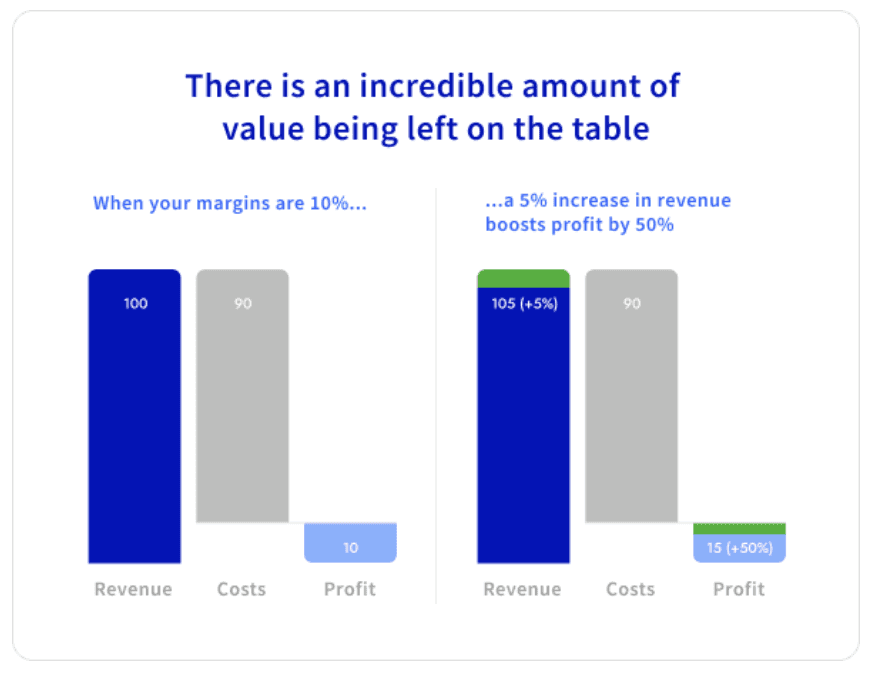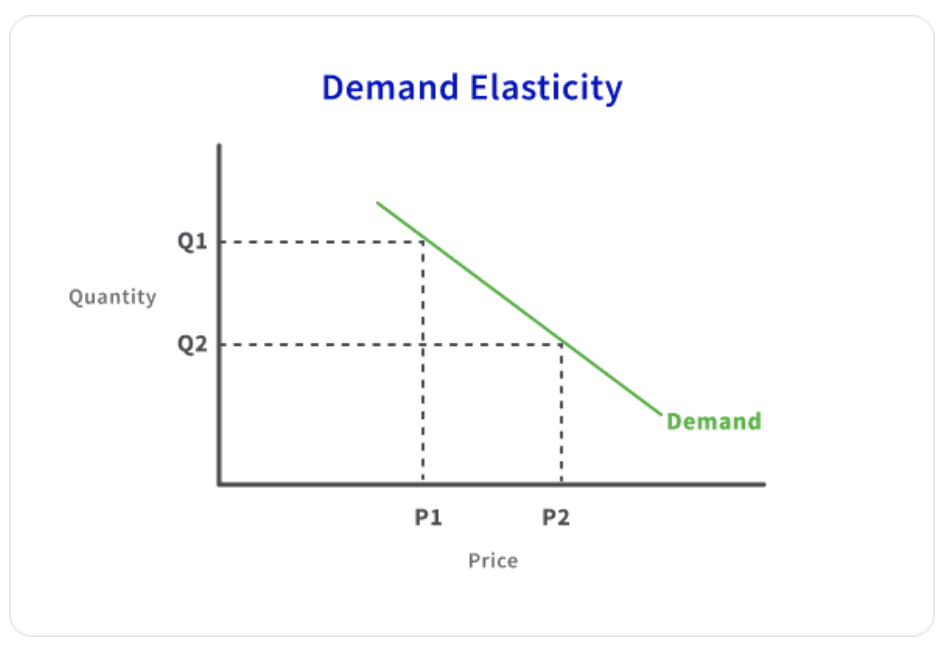Price Testing
Jun 13, 2023
How Lowering Your Prices Could Make You More Money
You may be surprised to learn that lowering your price might actually help you yield higher profits.

Adam Kitain
Although this may come as a surprise, a large percentage of e-commerce companies are pricing their products too high. Although these companies are still making a profit, they could yield significantly better results if they decreased their prices. Though this may sound counterintuitive, let's dive into the math behind why this actually makes sense.
Let's talk about margins

In the above graph, the original margin is 10%. The company here increased their price by 5 dollars and saw an increased profit of 50% (clearly a dramatic difference). With such a thin margin, it wouldn’t make sense to lower your price, because you’d run the risk of making no profit at all. In this low-margin world, it makes more sense to increase prices in order to yield a better profit.
But here’s where the catch comes in: As It turns out, most brands actually do not have such thin margins and would greatly benefit from lowering their prices.
Lowering your price
A surprisingly large percentage of e-commerce sites have margins over 50%, some even as high as 90%! Let's think about an extreme example. Say your company sells a product for $10 and spends $1 on the cost of production. That would mean that you're making a profit of $9, meaning your gross margin is 90%.
Now say you decrease your price and instead sell your product for $9. This would mean your gross profit is $8 (a 88% gross margin). Here is where most people get caught, as they are missing out on a higher gross profit. But that's not where this ends; decreasing prices might still be the right answer for this company.
Enter elasticity

What is it?
Elasticity, in its most basic form, is the change in demand divided by the change in price. But why is this important in terms of revenue? Because if elasticity is < 1, increasing your price leads to more revenue. But, and this is key, if elasticity is > 1, decreasing your price actually leads to more revenue.
Basically, if you find the "sweet spot" for your price (which in many cases means lowering it), then your conversion rate increases and you will actually make more money! Now, revenue and profit are not the same, but the higher your margins, the more similarly they behave.
Why does this make sense?
Let's revisit the example! We decreased our price from $10 to $9, a 10% decrease. Say the elasticity of demand is 3, so a 10% decrease in price would yield a 30% increase in sales. For 100 units sold at $10, that would have been $1,000 in revenue and $900 in profit. Now, we're selling 130 units at $9, so even though our margins are 88%, we're making $1,170 in revenue (17% more) and $1,040 in profit (16% more).
Bottom Line
If you're going to take anything away from this post, it should be that your buyers are more sensitive than you realize. It turns out that the products of many brands have elasticities greater than one, meaning that they could seriously benefit from lowering their prices.
What we've seen through running thousands of tests here at Intelligems, is that even a dollar drop in price could open up an entirely new group of buyers for your product, leading directly to an increase in profit.
So the real question e-commerce brands should be asking to figure out their optimal price strategy is what is their elasticity of demand? The only way to accurately answer this is to test your prices. Testing your prices could mean thousands of dollars worth of increased profit, and changes the game for e-commerce merchants.
Price Testing
AB Testing
Ecommerce Strategy












